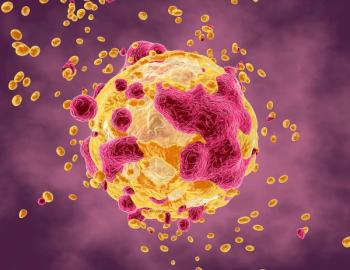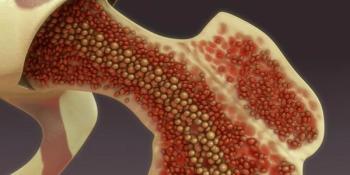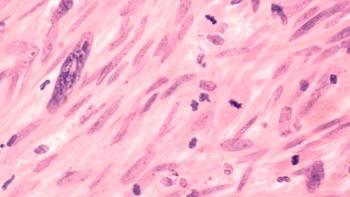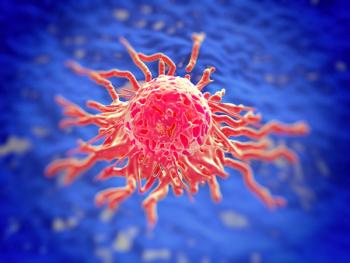
Trabectedin Fails to Improve PFS With Doxorubicin in Soft-Tissue Sarcoma
The addition of trabectedin to doxorubicin was not superior to doxorubicin alone in the first-line treatment of patients with advanced soft-tissue sarcoma.
The addition of trabectedin to doxorubicin was not superior to doxorubicin alone in the first-line treatment of patients with advanced soft-tissue sarcoma, according to results of a new study. Adverse events were increased with the combination, and the trial was stopped early for futility.
“Efficacy expectations for first-line systemic treatment of soft-tissue sarcoma…remain low, with a median progression-free survival (PFS) ranging from 2.5 to 5.5 months,” wrote study authors led by Javier Martin-Broto, MD, PhD, of Virgen del RocÃo University Hospital in Sevilla, Spain. Trabectedin, which was
The new open-label study included 115 patients randomized to either doxorubicin alone (60 patients) or doxorubicin plus trabectedin (55 patients). All patients had locally advanced or metastatic soft-tissue sarcoma and had not previously received chemotherapy. The results were
The trial was stopped for futility after interim analyses showed little benefit with trabectedin. After a median follow-up of 13 months, the median PFS was 5.5 months with doxorubicin alone and 5.7 months with trabectedin, for a hazard ratio (HR) of 1.16 (95% CI, 0.79–1.71; P = .45). Median overall survival (OS) was also similar, at 13.7 months in the control group and 13.3 months in the trabectedin group, for an HR of 1.21 (95% CI, 0.77–1.92; P = .41).
Response rates also did not differ significantly. In the doxorubicin alone patients, 17% had a partial response, 47% had stable disease, and 36% had progressive disease; in the trabectedin patients, these rates were 17%, 53%, and 30%, respectively.
In the trabectedin group, 18% of patients experienced grade 3 or 4 thrombocytopenia, compared with only 2% of the control group (P = .016). Though these did not reach significance, there were also trends toward increased rates of grade 3 or 4 neutropenia and anemia with trabectedin. Also, the trabectedin patients were significantly more likely to have grade 3 or 4 liver toxicity with regard to bilirubin and alanine transaminase elevations.
The researchers also found that among 90 available specimens, certain gene expression profiles were associated with improved PFS and OS. Specifically, patients who were FAS-positive and p53-negative had a higher PFS than other combinations, and the investigators noted that the prognostic value of these markers is worth pursuing further.
“In conclusion, the combination of trabectedin plus doxorubicin did not show superiority over doxorubicin alone as first-line treatment of advanced soft-tissue sarcoma patients, at least under this schedule,” the authors concluded. The earlier, successful phase I study administered doxorubicin first in sequence, whereas this trial reversed the order. The sequence, as well as the potential prognostic value of the biomarker expression, suggest that further research in this and other combination therapies with doxorubicin for soft-tissue sarcoma is still warranted, they wrote.
Newsletter
Stay up to date on recent advances in the multidisciplinary approach to cancer.



















































































